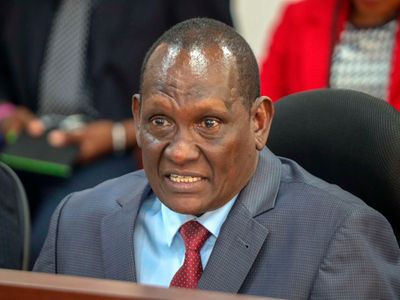South Africa must urgently and sustainably solve the lack of suitable energy supply for its ever increasing electricity demand. Load shedding must end and the IRP should provide a roadmap for achieving this. But it does not.
Load shedding has taken a back seat these past few weeks without any rolling blackouts. People have many other things to worry about instead. But the general election on 29 May is coming and nobody will be surprised if load shedding is back on 30 May.
Government has always been dragging its feet when it comes to ensuring that the country has sufficient electricity for all its needs. Since the first load shedding reared its ugly head in 2007, there have been many plans to fix the national grid and move to cleaner energy sources.
There was an Integrated Resource Plan (IRP) 2019. And then we waited for the next one and IRP 2023 was eventually published after everyone just about gave up that it would ever happen. And as Bonga Maliwa, investment analyst at Futuregrowth Asset Management, says, it had some surprises as well as some concerns.
Coal power plants not the answer for energy shortageMaliwa says it is surprising to see that the proposed solution for the countrys energy challenges in the new draft IRP 2023 is to prolong the life of the aging Eskom coal plants and use unproven clean coal technologies to mitigate the adverse environmental impact from these plants.
Coal plants have long been synonymous with negative environmental impact due to the reduction in air quality and health risk in surrounding communities. The plants have also been shown to be very unreliable as a result of the aging infrastructure and historical maintenance neglect.
Last year South Africa suffered from severe load shedding due to a large increase in unplanned plant breakdowns even during periods of low energy demand. This was mainly attributed to the frequent breakdowns of the aging power plants.
Therefore, we do not think it is pragmatic to rely on Eskoms aging generation units, or their refurbishment to solve the countrys energy challenges. There is no evidence that the unplanned breakdowns will be solved in the medium term, as set out in the draft IRP 2023.
The consensus view by energy experts across the country is that the only way to solve load shedding is from new investments in renewable energy projects. In addition to feasibly high costs of keeping the existing plants running, it seems likely that the mooted clean coal technology would be uneconomically expensive, assuming it could even be executed, Maliwa says.
Where is the additional energy capacity?IRP 2023 proposes 29GW of additional energy capacity built between now and 2030 to address the countrys energy needs, but Maliwa says this figure is significantly below the 60GW requirement recommended by the Presidential Climate Commission (PCC).
The biggest issue with the IRP 2023 is that it minimises the role of renewable energy as the main solution to South Africas energy challenges despite the PCCs conclusion that electricity planning should consider the requirements of mitigating climate change and be anchored on least-cost pathways.
According to the PCC the least cost, no-regret option remains renewables, batteries and balancing and peaking support, for example from gas. Not only are these the cheapest, secure options, but they are also the only options with build times short enough to make a meaningful impact on load shedding.
Maliwa says it is therefore clear that the proposal to prolong the use of unreliable coal plants goes against the recommendations of both the IRP 2019 and the PCC and is also in conflict with the National Development Plan (NDP) goals set by the president.
We also believe that some of the other proposals in IRP 2023 are impractical, such as the assumption of 3 000MW coming from a new Eskom-built gas plant in 2028. The IRP does not explain how this will be funded. Eskoms R254 billion treasury bailout precludes the group from spending the bailout funds towards new capex beyond transmission and distribution, he points out.
Removing license requirements for private power helpedAs part of boosting the energy generation capacity of the country, the government removed the license requirements for private power generation in July 2022. This had a positive impact on boosting private sector investment into the energy sector in South Africa, which led to under-utilised grid capacity being taken up by the private sector, resulting in grid capacity constraints in the Western Cape, Northern Cape and Eastern Cape.
Maliwa says the take-up of support for renewable energy investment by the private sector shows its willingness to support this initiative. The capital market also has undeployed funds ready for investment into new renewable energy projects.












